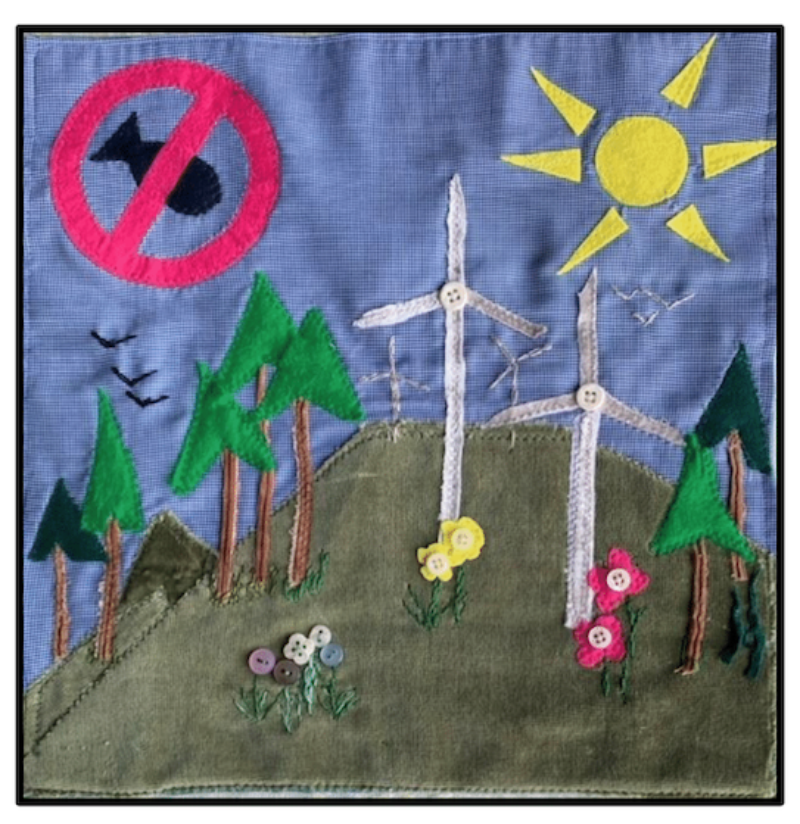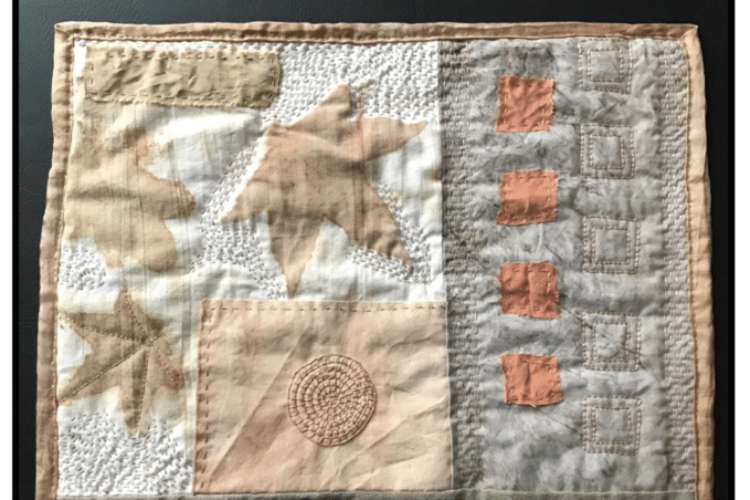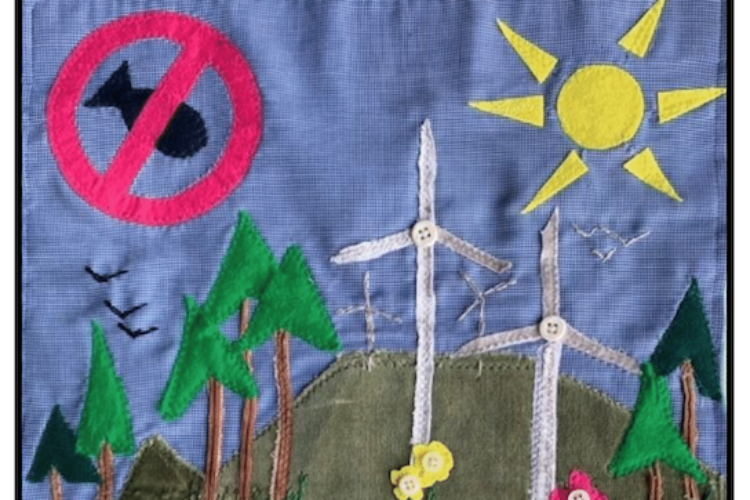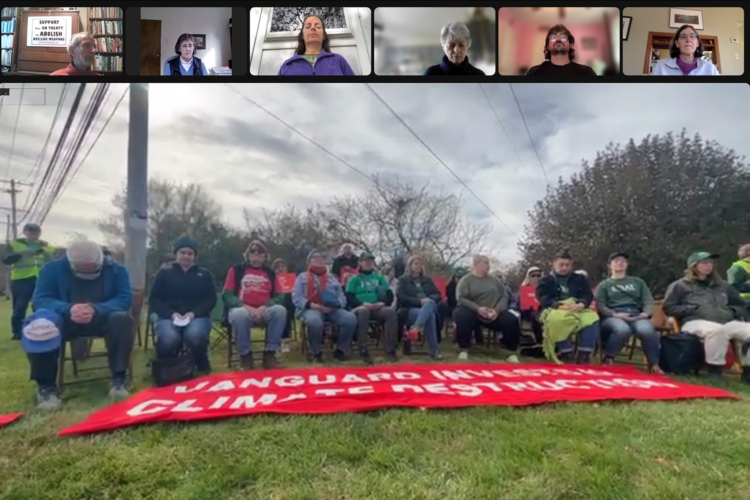Loving Earth Project: Climate Crisis Textile Art for COP26

A series of exhibitions of textile art was on display in a variety of venues in and around Glasgow during COP26, including at the city’s Quaker meetinghouse. Made by people and communities in many parts of the world, the Loving Earth Project depicts places, people, and things that the artists love, how environmental breakdown threatens them, and what people are doing about it.
“The Loving Earth Project uses creative and reflective ways to help people discover what we each can do , without becoming overwhelmed,” said Linda Murgatroyd, who started the project with a group of Quakers. “Love is at the root of our anger, fear and sadness about climate breakdown. It can empower us if we engage with it creatively.”
Over 400 small textile panels have been made so far as part of the Loving Earth Project, depicting images such as polar bears, bees, flowers, landscapes, sea creatures caught in plastic, and recycled clothing. They are each accompanied by a short text written by the panel-maker. Most can be seen in the project’s online gallery: LovingEarth-Project.uk/Test-Gallery. To learn more, create a panel, or possibly host the exhibit in your hometown, visit the website.
-

“Wear It As Long As Thou Canst”
Pieces of cloth, printed and dyed with plants, placed together on a soft wool base. As I stitch by hand, slowly and quietly, with plant dyed thread, I have time to reflect.I discover new landscapes emerging between my hands contours, ley lines, hills and valleys, wandering streams and lines of desire. In time of challenge I find myself returning to my square—my security blanket.
But even as I stitch I am aware of the rivers diverted and piped in cotton production, the stories of cruelty in mass sheep shearings, the dead worms who produced these beautiful scraps of silk.
When I think about the environment and the actions I take to protect it, it is easy to become overwhelmed. There is so much to do and I am so small. People around me, those I know and those I see on the television and in the news can seem so much more passionate, more effective than me.
Each thoughtful stitch is a step on my path. Each change I make in my life is part of a longer journey. I need to be gentle with myself as well as with the world.
I come back to the words of George Fox to William Penn about his sword: “Wear it as long as thou canst.”
-

Without War We Can Have a Sustainable World (An Excerpt)
For this panel I used no new material to celebrate how the landscape could be without war or climate change. We live in a beautiful country; I’d like it to stay beautiful.
Estimates suggest that military emissions amount to 6% of global emissions, excluding the emissions from the effects of war—fire, rebuilding, healthcare, etc. For our security we need to focus on the essentials and war is not one of them. Money should be spent on the real threats— climate change and pandemics—not on wars.
In 2020, global military spending rose by 2.6% to almost $2 trillion and the U.K. announced an increase in military spending of £16.5 billion while signing only £1 billion for the “Green Industrial Revolution.”
In my view this is a misappropriation of funds—and a global problem needs a global solution. I am a supporter of Medact and the Campaign Against the Arms Trade, but pressure on governments from all quarters needs to mount. That’s why I’m writing to my PM, my MP, MSP and others with influence, to urge governments to use COP26 to commit to reducing military Greenhouse Gas emissions.


